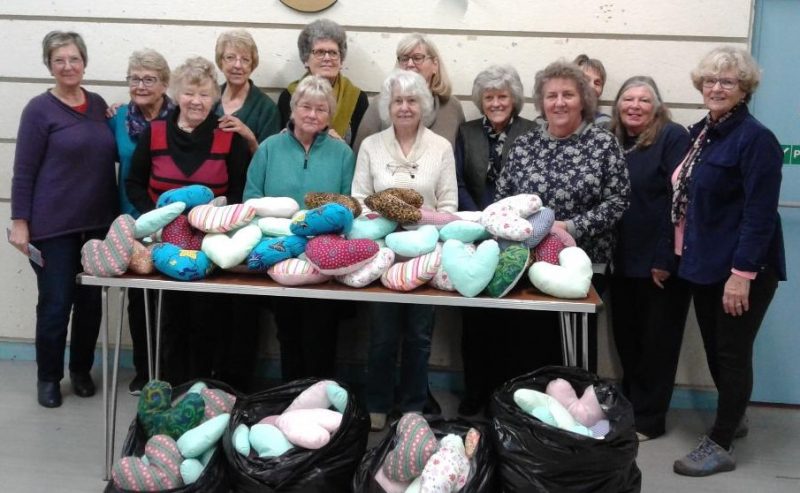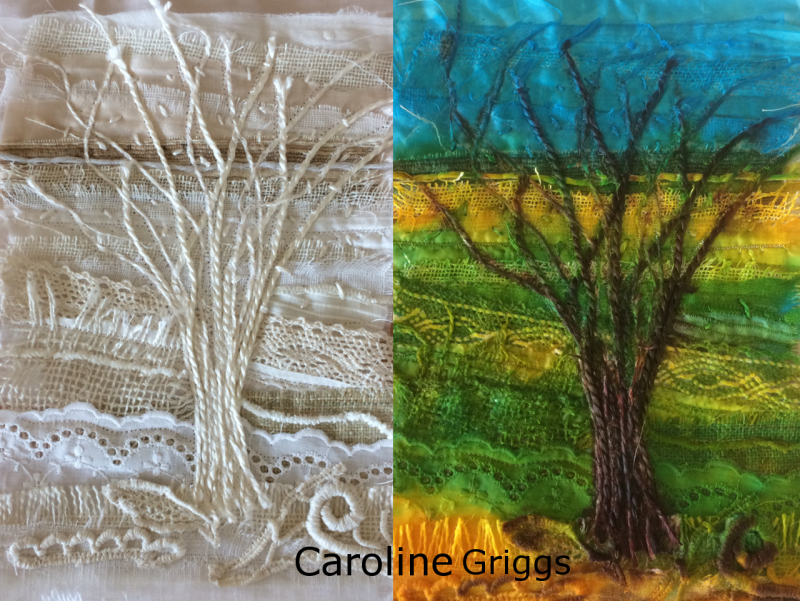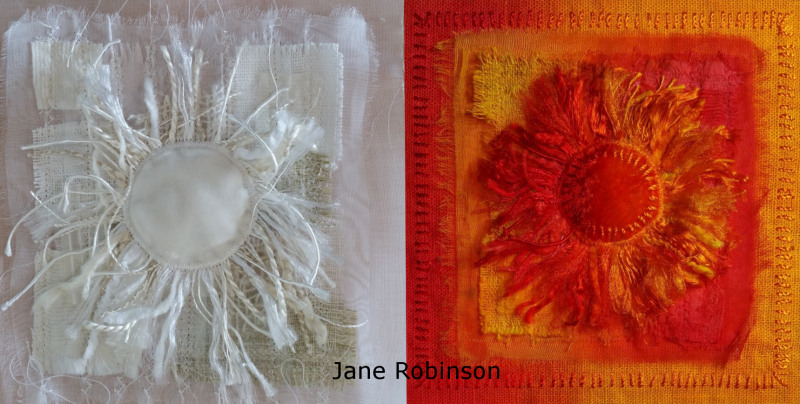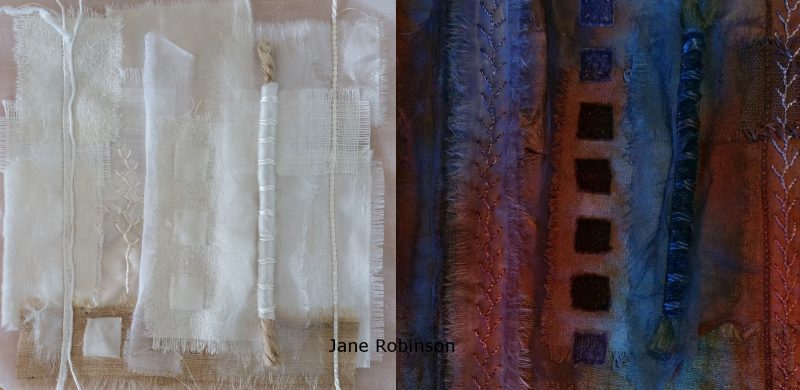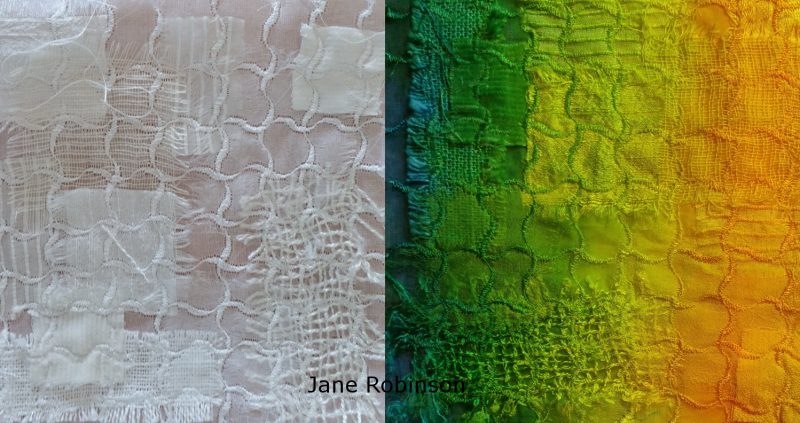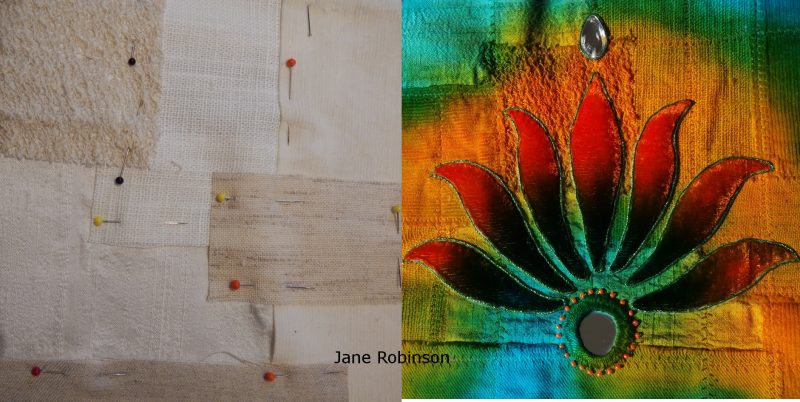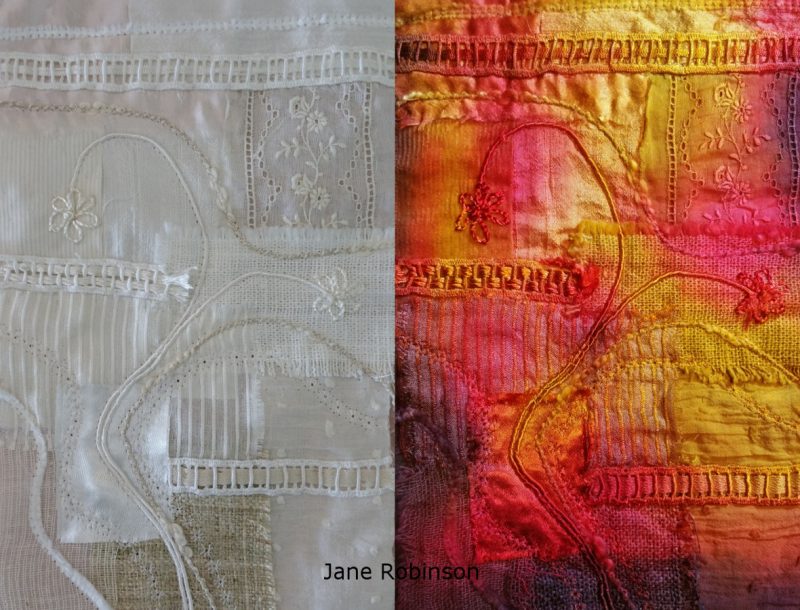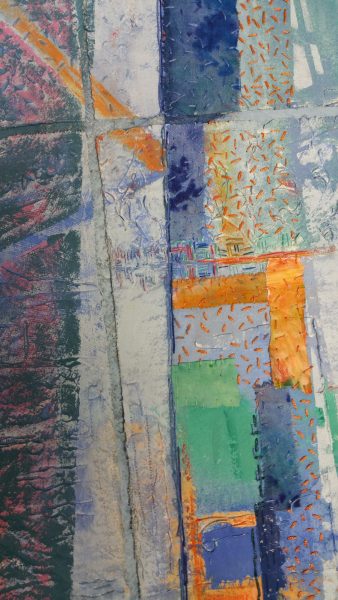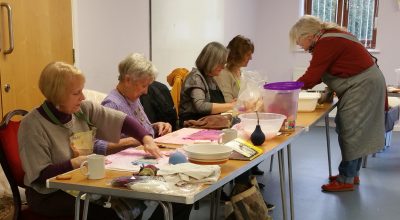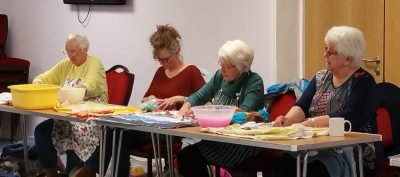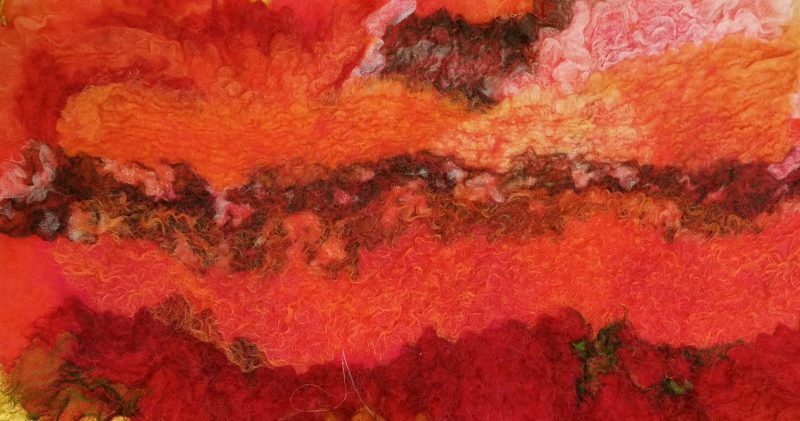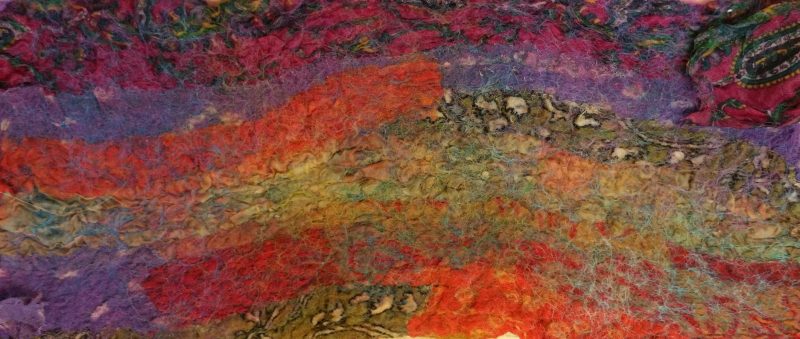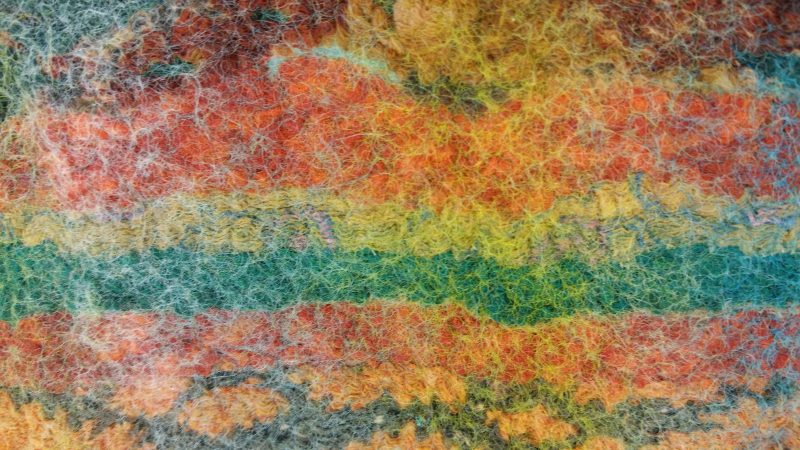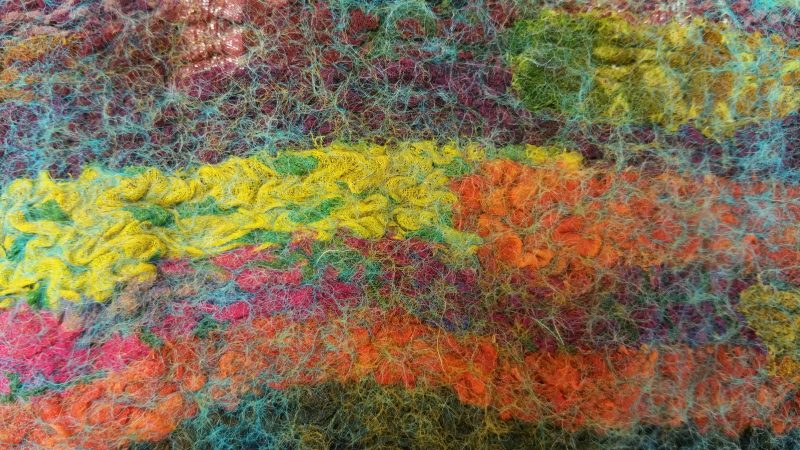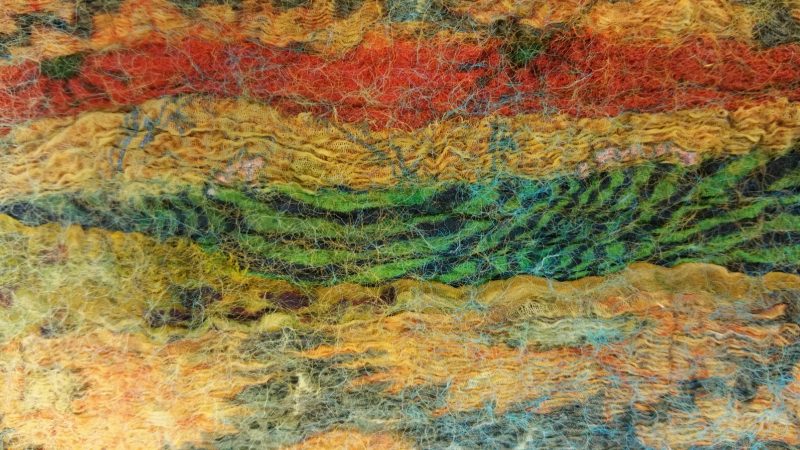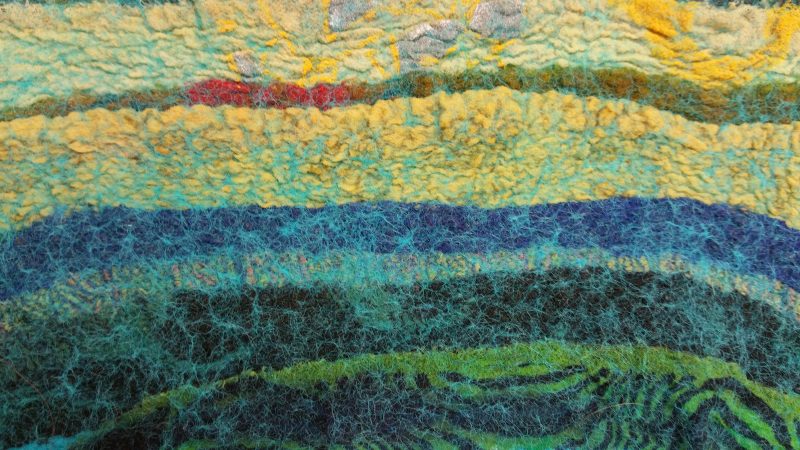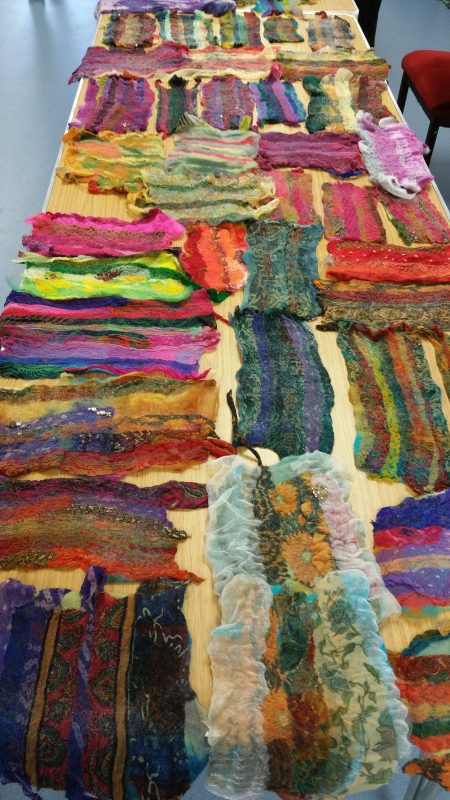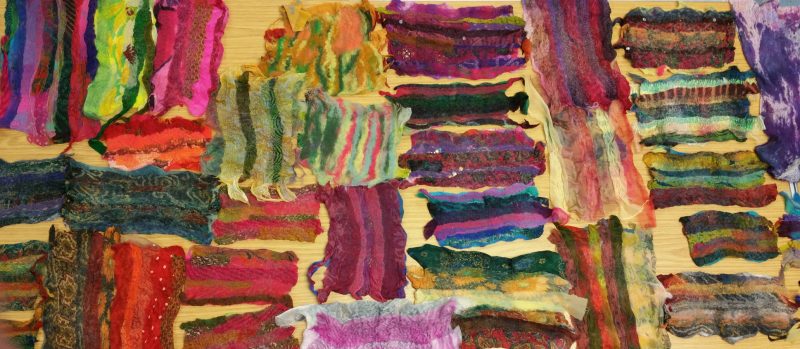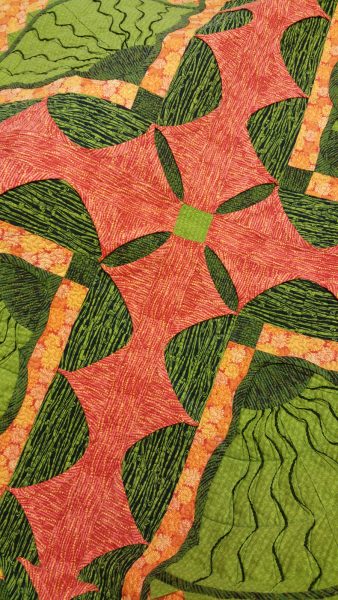The South East Regional Day will be on the 11th July. See details in the poster.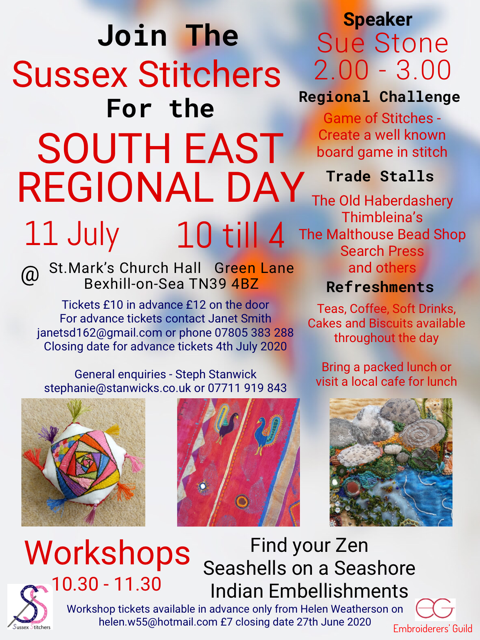
Tag: Worthing Tuesday Embroiderers Guild
Hearts
Christmas meeting, and the ‘Take Two’ Challenge
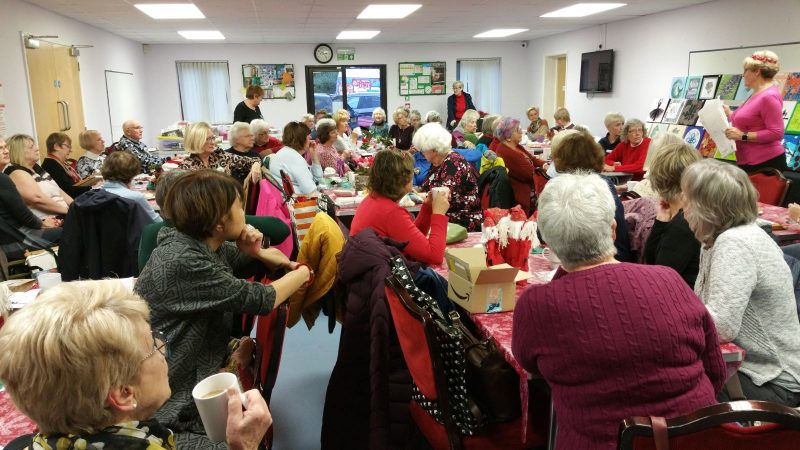 There was a great turn-out for the Christmas meeting, and it was a lovely afternoon of chat, stitch and cake. Highlight of the afternoon was viewing the results of the ‘Take Two’ challenge (reminder: the challenge was to stitch a piece to be presented on a pre-set canvas size, using only two colours). There was a grand total of 43 entries, and everyone was impressed by the variety and quality of the work. Entries included a wide range of modern, traditional, hand-stitch, machine-stitch etc., and it really reminded us all what a varied group of stitchers we are. The £1 per vote charge raised £76 for the Air Ambulance.
There was a great turn-out for the Christmas meeting, and it was a lovely afternoon of chat, stitch and cake. Highlight of the afternoon was viewing the results of the ‘Take Two’ challenge (reminder: the challenge was to stitch a piece to be presented on a pre-set canvas size, using only two colours). There was a grand total of 43 entries, and everyone was impressed by the variety and quality of the work. Entries included a wide range of modern, traditional, hand-stitch, machine-stitch etc., and it really reminded us all what a varied group of stitchers we are. The £1 per vote charge raised £76 for the Air Ambulance.
Here are a few of the entries, with people studying them and trying to decide which to vote for. You can see the winning entries below that. At a later date, I’ll put up an image of each entry – that will take a little longer, so I wanted to get the winning ones up sooner rather than later.
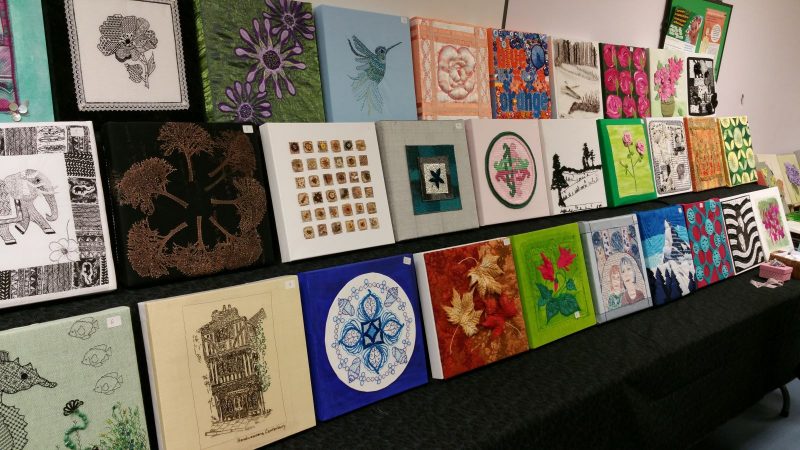
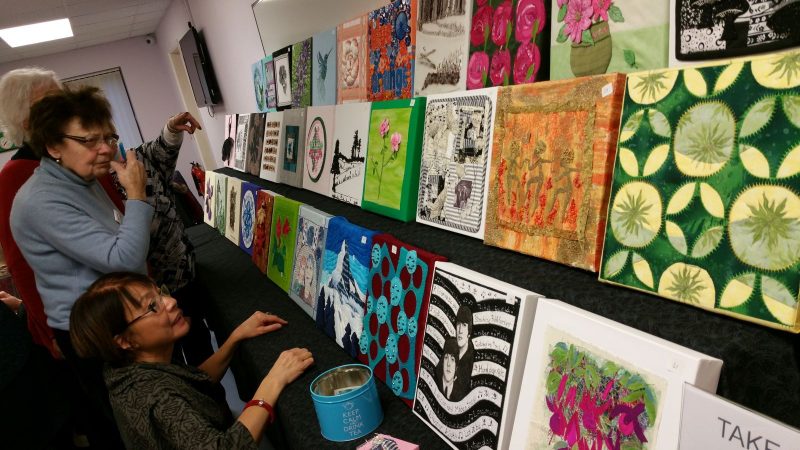
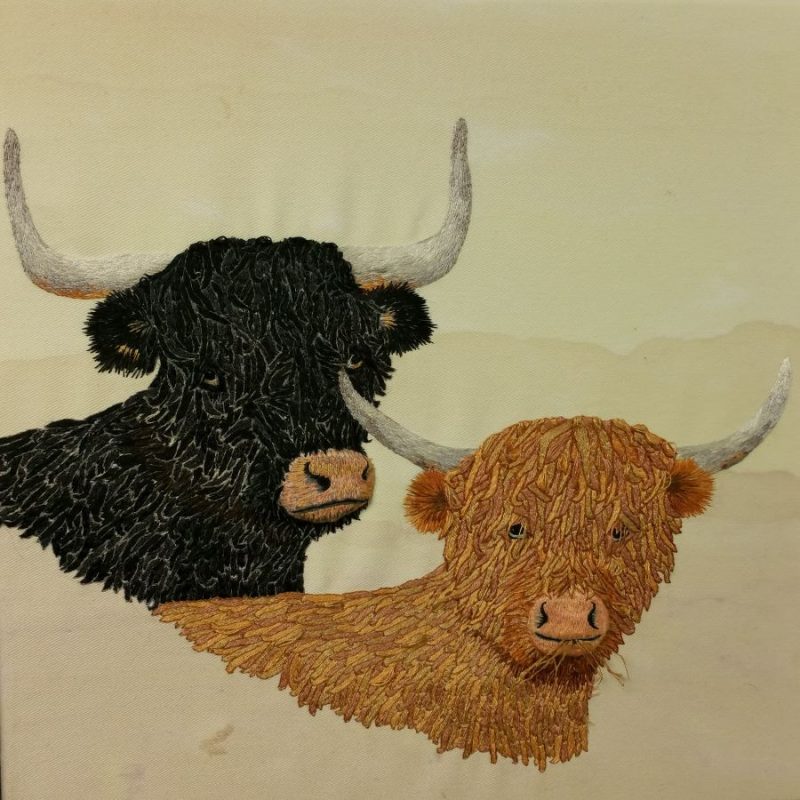
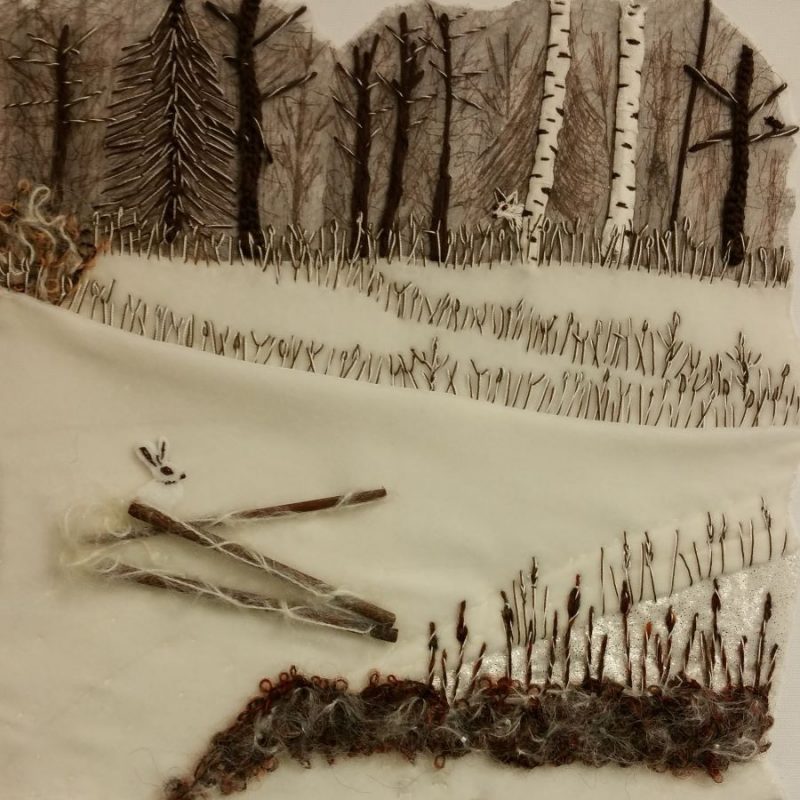
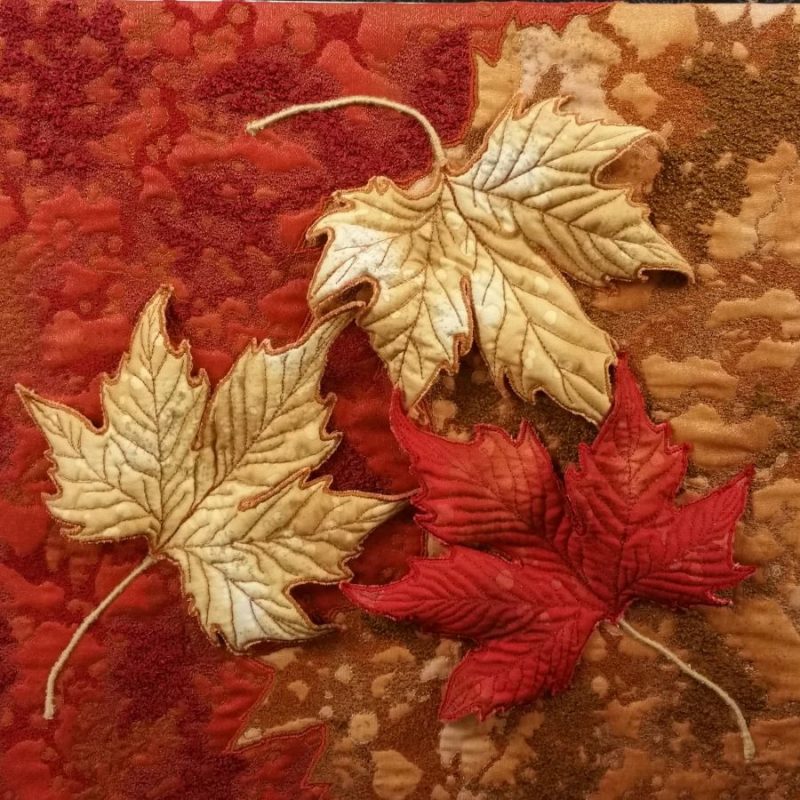
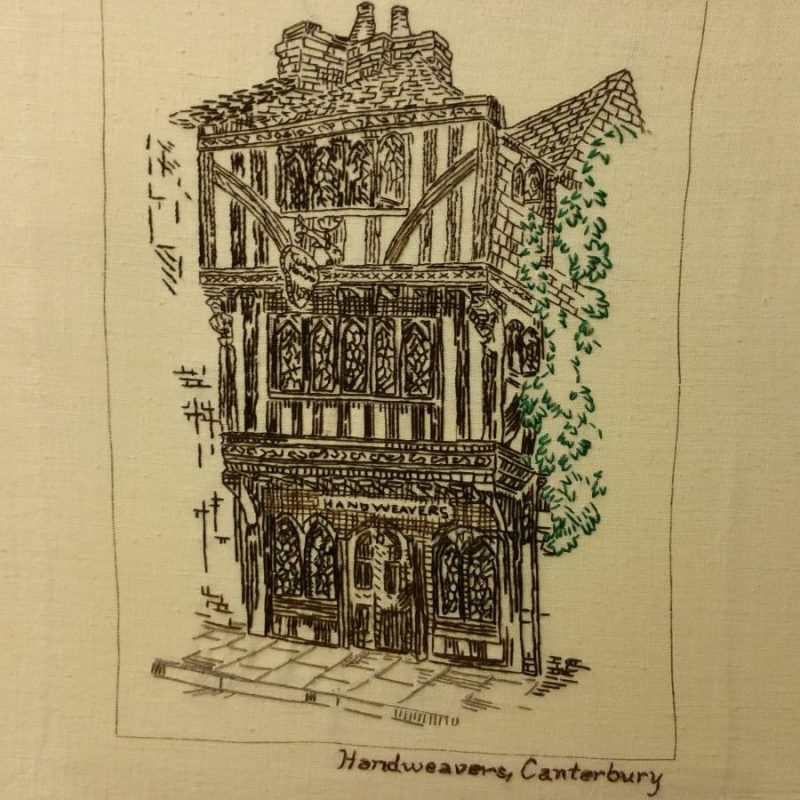
Summer-School ‘show and tell’.
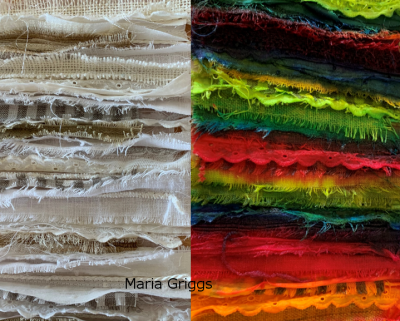 The 2019 AGM went very smoothly. Anne Turner gave an account of an active and happy year stitching, and described the wide range of talks and workshops that take place each month. The Treasurer’s report showed a stable and healthy situation; and willing volunteers came forward to replace the three committee members who were stepping down. Thanks were given to outgoing committee members Alison Crossthwaite, Carole Dengate (outgoing Secretary) and to Anne Turner for her 3 years as our chair.
The 2019 AGM went very smoothly. Anne Turner gave an account of an active and happy year stitching, and described the wide range of talks and workshops that take place each month. The Treasurer’s report showed a stable and healthy situation; and willing volunteers came forward to replace the three committee members who were stepping down. Thanks were given to outgoing committee members Alison Crossthwaite, Carole Dengate (outgoing Secretary) and to Anne Turner for her 3 years as our chair.
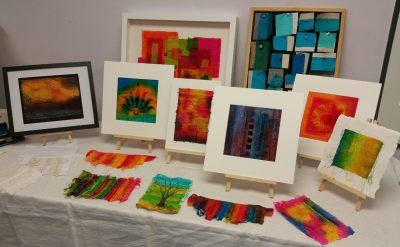
Participants in the Regional summer-school showed other members some of the diverse work that was produced during the 3-day gathering. Branch members took part in two different workshops – a stitch and dye group with Ruth Issett, and a print and stitch group with Faye Maxwell. It was a good opportunity to get to know fellow branch members a bit better, as well as members from other parts of the region, and to get absorbed in our different activities.
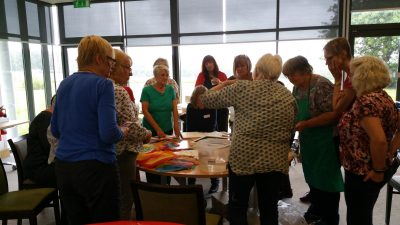
Maria kicked off with a description of the lovely environment at the training centre at Roffey Park, and the excellent facilities and high level of teaching (and yummy food).
Maria introduced the stitch and dye technique that was taught in Ruth Issett’s group. Initial stitching was done in white fabrics and threads, which were then dyed afterwards with procion dye, leading to a surprise each time when the colours were applied.
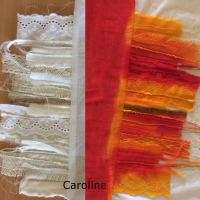 Caroline showed samples that illustrate the technique, where she had cut the sample in half before dyeing and left one half un-dyed. This was a useful record, since other pieces were dyed after stitching so the only record of the ‘white’ stage is in photographs. Other examples below show pieces before and after dyeing.
Caroline showed samples that illustrate the technique, where she had cut the sample in half before dyeing and left one half un-dyed. This was a useful record, since other pieces were dyed after stitching so the only record of the ‘white’ stage is in photographs. Other examples below show pieces before and after dyeing.
The piece by Maria (below) was based on a sunset. It shows the different stages: before dyeing: dyed but not rinsed: rinsed, and finally framed.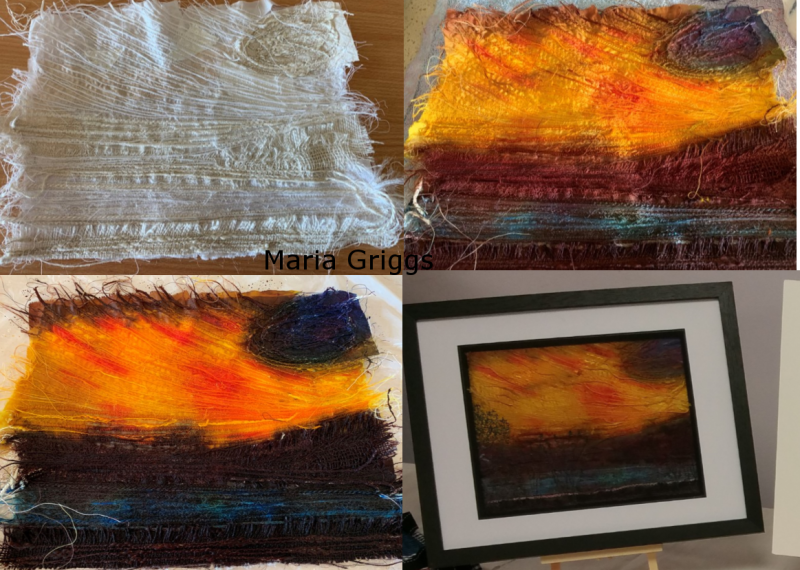
Other branch members went to the workshop with Faye Maxwell, who was a popular tutor at the summer school the year before. Their work started with a choice of printing blocks, which were printed onto plain fabric before being embellished with stitch.
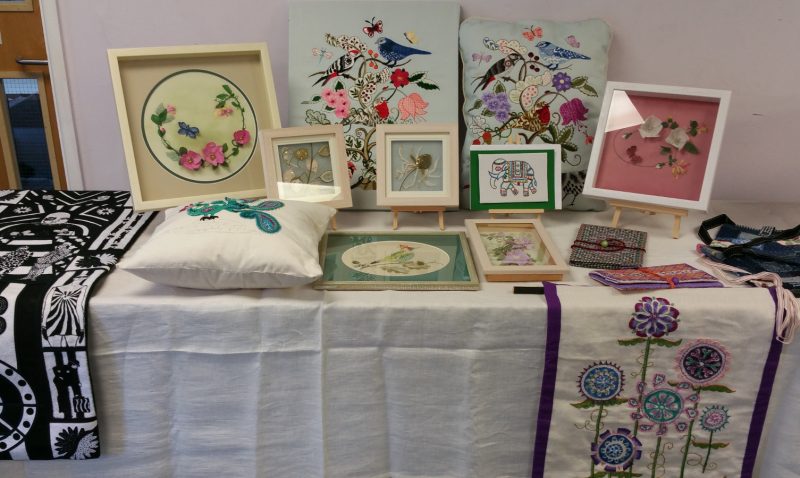
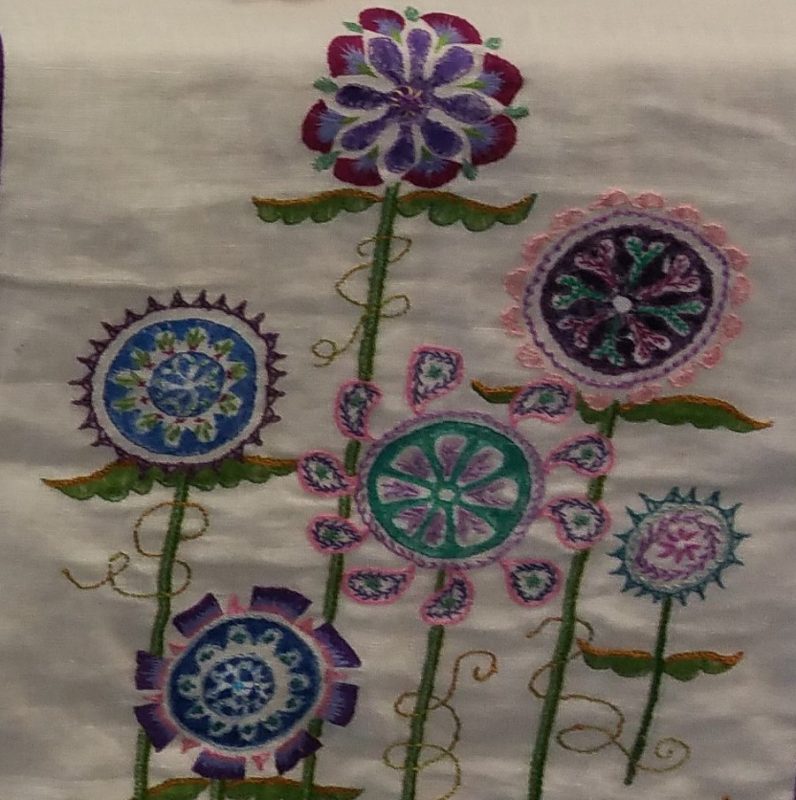
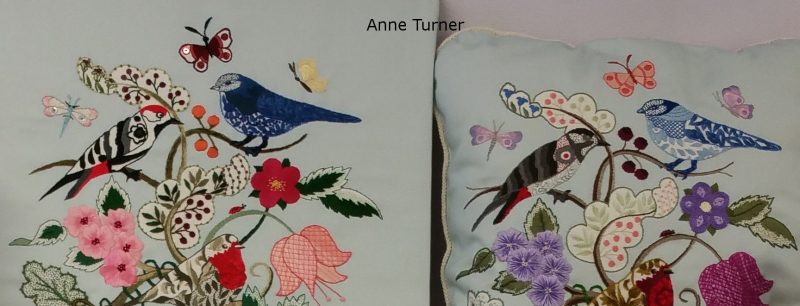
‘The month of leaves and roses’
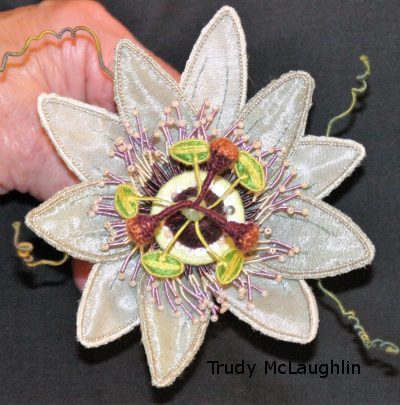 It often strikes me what a lovely overlap there is between gardening and embroidery. It’s the month for wandering round beautiful gardens, smelling the roses and soaking up inspiration for our stitching.
It often strikes me what a lovely overlap there is between gardening and embroidery. It’s the month for wandering round beautiful gardens, smelling the roses and soaking up inspiration for our stitching.
‘It is the month of June,
The month of leaves and roses,
When pleasant sights salute the eyes
And pleasant scents the noses’.
(Nathanial Parker Willis)
If you read this in time, there are still 4 days when you can catch the lovely exhibition of embroidery at Nymans Gardens by Dorking EG Branch, in which all the work is based on the flowers and plants of Nymans. It’s open until Friday 14th; if you read this in time, it’s well worth the trip so do try to go. It’s the perfect month to visit the Nymans rose garden too.
Our most recent meeting was our ‘Members Day’ when we spent the whole day together chatting and stitching, and sharing lunch. We had a wonderful talk by Eileen Blaney on the history of the branch. Eileen has very kindly agreed to write up the notes for her talk so that it can be added properly to the website, together with photos, so I won’t try to summarise her talk here. ‘Watch this space’ as they say! Many thanks Eileen for a very interesting and entertaining talk.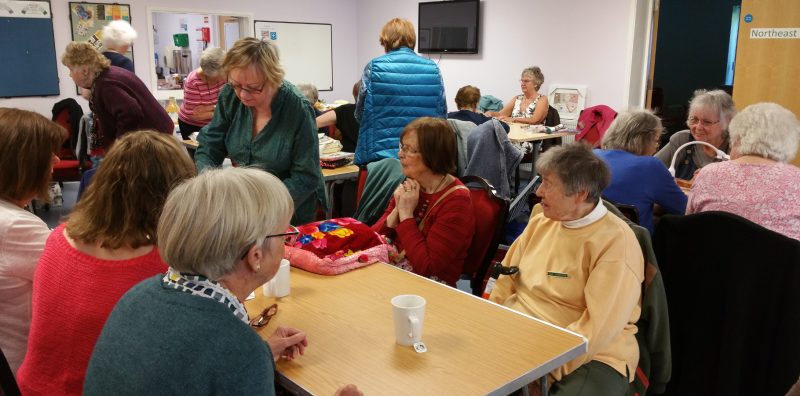
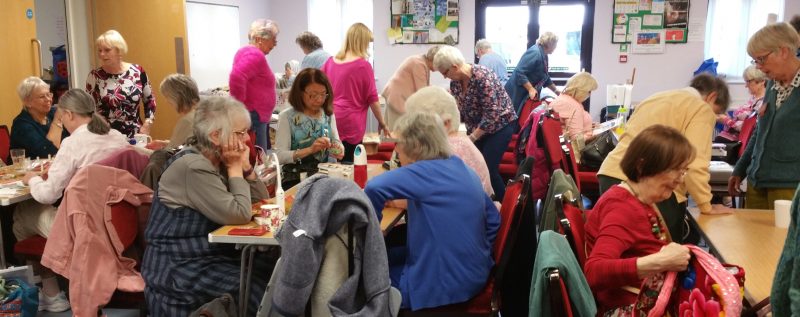
The challenge of colour
I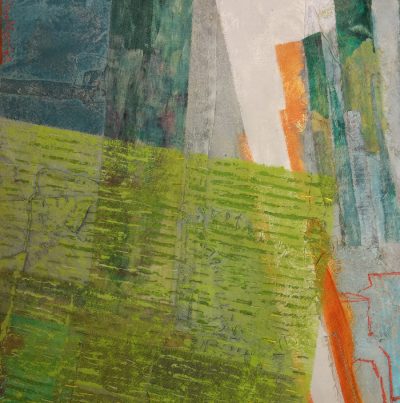 n her talk to WTEG this month, Jae Maries focussed on the use of colour in textile art. This was very timely, as members had recently started to think about the Branch Challenge, ‘Take Two’, which is to make a piece of work using just two colours. Jae emphasised how personal our response to colour is, and how it reflects the mood of the maker and has an impact on the viewer.
n her talk to WTEG this month, Jae Maries focussed on the use of colour in textile art. This was very timely, as members had recently started to think about the Branch Challenge, ‘Take Two’, which is to make a piece of work using just two colours. Jae emphasised how personal our response to colour is, and how it reflects the mood of the maker and has an impact on the viewer.
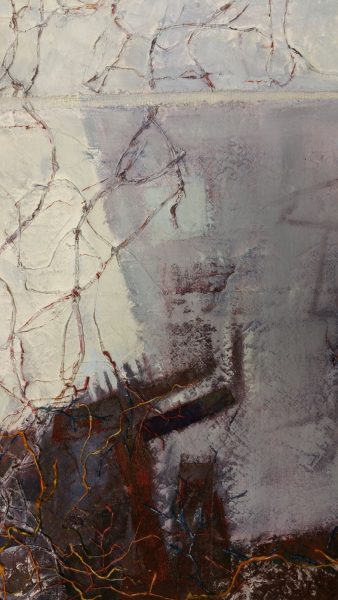 Jae spoke about how colour can create drama in a piece, with the use of contrast, and how this can affect mood. Jae said that she sometimes highlights some quite ‘dark’ issues in her work, for example knife crime and homelessness. She questions the assumption that embroidery has to be ‘pretty’. This piece shows how Jae sometimes uses a very restricted range of colour, emphasising dark and light. This can add to the sense of closeness and distance of the subject, as does the use of cool colours to recede and warm colours to move forward.
Jae spoke about how colour can create drama in a piece, with the use of contrast, and how this can affect mood. Jae said that she sometimes highlights some quite ‘dark’ issues in her work, for example knife crime and homelessness. She questions the assumption that embroidery has to be ‘pretty’. This piece shows how Jae sometimes uses a very restricted range of colour, emphasising dark and light. This can add to the sense of closeness and distance of the subject, as does the use of cool colours to recede and warm colours to move forward.
Jae uses interesting and unusual textures in her work, derived from her painterly background. She uses calico, which she sizes, then primes white; she then paints on top of that and adds textures and more paint. Sometimes stitch is quite dense, and sometimes it is minimal. This piece shows seeding in a contrasting colour, next to areas where the stitch has been painted over to leave a trace behind in the texture. The photo below is from the same piece, based on roads and rice fields in Vietnam. It shows the impact of an individual splash of a contrasting colour: the tiny splash of pink provides a focal point for the whole piece. 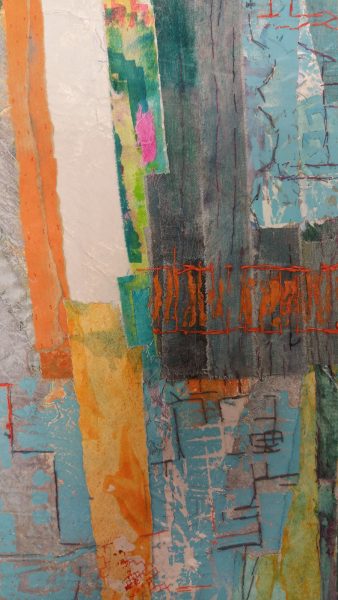 Jae acknowledged that many embroiderers want to create work that is figurative and restful, and based on more traditional techniques. Whilst not criticising that approach, she did encourage her audience to think about playing with colour in a different way and taking some risks. After the talk quite a few people were talking about the ‘Take Two’ branch challenge, so Jae had clearly got people thinking.
Jae acknowledged that many embroiderers want to create work that is figurative and restful, and based on more traditional techniques. Whilst not criticising that approach, she did encourage her audience to think about playing with colour in a different way and taking some risks. After the talk quite a few people were talking about the ‘Take Two’ branch challenge, so Jae had clearly got people thinking.
(Jae’s work is photographed and shared here with kind permission from Jae).
Slow Felting
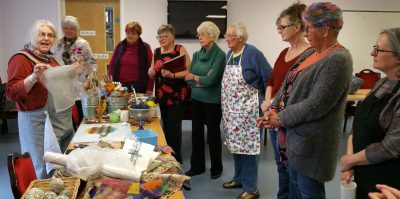 We had a very inspiring and relaxing day workshop on nuno-felting with Clare Bullock recently. This was based on Clare’s individual method of bonding wool and light fabrics together. It is a much gentler way of felting compared to the normal way of endlessly rolling and bashing the wool into submission – and you don’t end up with a piece of felt that’s the same thickness and weight as a dinner plate. What you end up with is a blended, textured piece that lends itself to embellishing with stitch. Although Clare doesn’t particularly talk about Mindfulness in her teaching, nevertheless the day had a Mindful feel to it. The day was lighthearted and productive. There are a couple of photos below that show how we were gently absorbed all day. Scroll down below that to see some of the work that was produced. Many thanks to Clare for a lovely day.
We had a very inspiring and relaxing day workshop on nuno-felting with Clare Bullock recently. This was based on Clare’s individual method of bonding wool and light fabrics together. It is a much gentler way of felting compared to the normal way of endlessly rolling and bashing the wool into submission – and you don’t end up with a piece of felt that’s the same thickness and weight as a dinner plate. What you end up with is a blended, textured piece that lends itself to embellishing with stitch. Although Clare doesn’t particularly talk about Mindfulness in her teaching, nevertheless the day had a Mindful feel to it. The day was lighthearted and productive. There are a couple of photos below that show how we were gently absorbed all day. Scroll down below that to see some of the work that was produced. Many thanks to Clare for a lovely day.
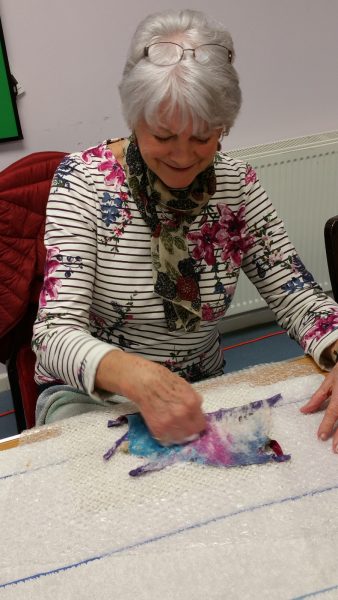
And here are some examples of the work that was produced during the day, with two photos at the end of all the work together. It will be interesting to see what people do with their nuno-felted pieces once they are stitched.
Twidding and Fiddling
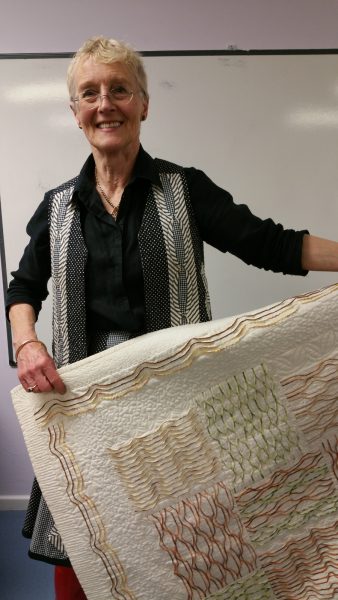
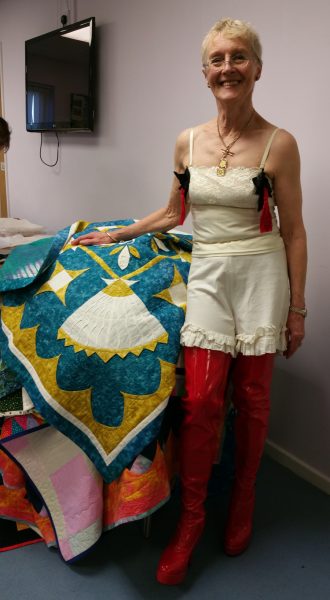
Jennie Rayment gave us an afternoon of real belly-laughs this month during her talk ‘Twiddling and Fiddling’.
Jennie is well-known as a manipulator of fabric and a prolific quilt-maker, as well as an author and quilt judge. She could also have had a career as a stand-up comedian!
Jennie arrived wearing her own creations, which she had designed for a fashion-show at a quilting festival. One thing led to another, and through a series of hilarious anecdotes that I couldn’t possibly try to replicate, Jennie gradually shed each layer of clothing during her talk, to reveal increasingly salacious stitched under-garments, until she was down to this layer, together with ‘Kinky Boots’. There was another hilarious anecdote of how her husband’s luggage was searched when he brought the boots back to the UK for her – and having failed to explain it to the customs official he just said ‘they’re for my evening job’. Even the Union Jack stitched on the posterior gave us a laugh (it was for an American audience); it was accidentally stitched upside-down, i.e. the international signal ‘I am in distress’.
Another belly-laugh was her moment of realisation, during a talk to hundreds of people, that the name she had given a particular quilt might not have been wise: ‘Totally tucked-up fan’ (think about it).
There were lots of lovely quilts to look at, like this beautiful one that was place over Jennie’s mother’s coffin during the funeral service, but was only just rescued in time when the undertaker mistakenly thought it was supposed to go into the grave.
Jennie gave out some really useful stitching advice, for example ‘red wine is OK when you’re stitching dark colours, but stick to white wine when you’re stitching white’.
A great afternoon Jennie, thanks.

